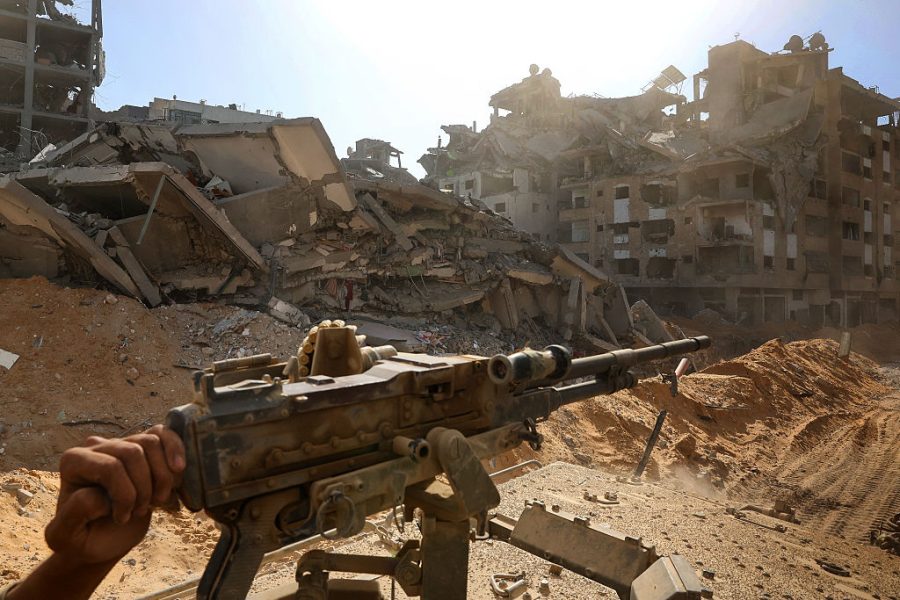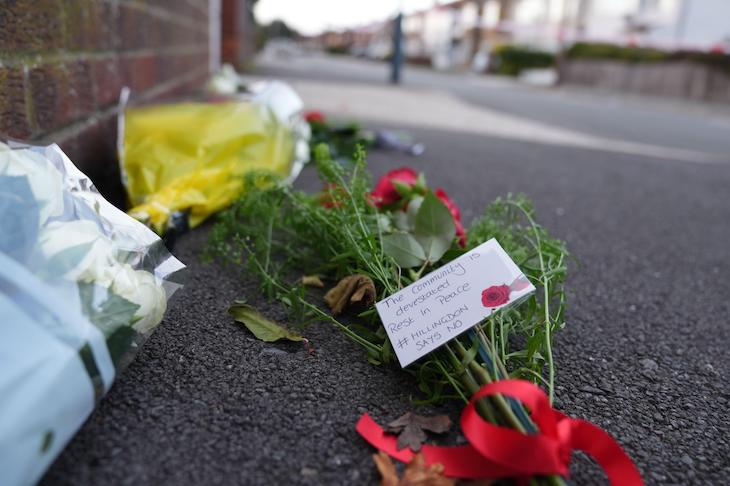In the latest blow to the beleaguered Gaza ceasefire, Israeli aircraft this week struck targets in Gaza City after Hamas carried out an attack using rocket-propelled grenades and sniper fire on IDF soldiers in the Rafah area. One Israeli reserve soldier was killed in the Hamas attack. The exchanges of fire took place amid continued Hamas stalling on the issue of the return of the bodies of slain Israeli hostages.
There was widespread Israeli outrage this week after filmed evidence emerged showing Hamas fighters re-burying body parts of a murdered hostage whose corpse they claimed to have already returned. After burying the body parts of Ofer Tzarfati, 27, of Kibbutz Nir Oz, who was kidnapped and murdered at the kibbutz on 7 October 2023, Hamas invited Red Cross officials to the scene and tried to present the body parts as those of another of the murdered hostages.
The Gaza Islamists’ intention, presumably, was to reveal this deception later on, and by so doing retain an additional murdered hostage as ‘collateral’ in the grisly trade in which it seeks to deter Israeli action against it by holding on to the bodies of those it has murdered.
Israel wants a period of rest and recuperation for its exhausted soldiers
These two incidents reflect the current troubled state of the ceasefire concluded in early October between the sides. They probably do not presage its imminent collapse, because neither side has an interest at the present time in a full return to hostilities. Hamas entered the ceasefire under the guidance of its allies in Turkey and Qatar, in order to prevent an IDF push into the Gaza City area which threatened the organisation’s continued existence as a governing structure. It needs the continued support of these powerful states, who in turn want to stay on the right side of the US administration of Donald Trump.
Israel, meanwhile, wants a period of rest and recuperation for its exhausted soldiers and similarly has an interest in staying on the right side of the Trump administration. The President, apparently, continues to believe strongly in his 20-point plan for what he called a ‘grand concord and lasting harmony’ in the Middle East. Jerusalem has no desire to, and cannot afford to, appear to be the party responsible for consigning the plan to the memory hole.
So for now at least, the framework brokered by the US looks set to remain formally in place, despite the incidents of the last days. But the path to its implementation remains strewn with obstacles. Indeed, it is possible to discern an emergent reality quite at odds with the provisions of the plan, which looks set to constitute the true ‘post war’ state between Israel and the Gaza Islamists. This emergent reality appears set to uneasily co-exist with the 20-point plan’s continued existence as an increasingly theoretical road map.
The problem with the 20-point plan is that while both sides had a clear interest in implementing its first phase, from there it gets complicated. The part that has been implemented involved Israeli forces withdrawing to an agreed upon line and the release of the then 20 remaining living hostages. Following this initial withdrawal, Israel now remains in control of 53 per cent of the Gaza area, with Hamas holding the remaining 47 per cent, along with the majority of Gaza’s population. Hamas, as seen in recent days, appears in no hurry to release the bodies of the remaining hostages. But this is not the main obstacle to the plan’s continued implementation. Article 13 of the 20-point plan contains the provision that:
Hamas and other factions agree to not have any role in the governance of Gaza, directly, indirectly, or in any form. All military, terror, and offensive infrastructure, including tunnels and weapon production facilities, will be destroyed and not rebuilt. There will be a process of demilitarisation of Gaza under the supervision of independent monitors, which will include placing weapons permanently beyond use.
This describes a situation in which Hamas agrees to its own dissolution as an armed factor in Gaza. Part of its wording suggests the influence of the Good Friday Agreement of 1998. But this is in defiance of reality. Hamas has been massively damaged as a military force over the last two years of fighting. It no longer exists as the hybrid army of 24 battalions that entered the war after the massacres of 7 October 2023. But as may be discerned from the rapidity and brutality with which it reimposed its authority on the 47 per cent of Gaza which it retains, it is far from destroyed.
Armed struggle as part of a long war intended to end in the dissolution of Israel is in the core DNA of this movement. Its officials, indeed, have made perfectly clear that they have no intention of carrying out those provisions of the plan which call on it to disarm. On 11 October, a Hamas official told Agence France Presse plainly that ‘the proposed weapons handover is out of the question and not negotiable’.
With Hamas making its intention not to disarm clear, those countries which had considered signing up for the ‘international stabilisation force’ envisaged by the plan are now having second thoughts. No external third party wants to put its manpower in harm’s way challenging a jihadi armed force determined to prevent its own dissolution. And for as long as Hamas remains in control of part of Gaza, there is an additional reluctance on the part of outside actors to commit resources to the reconstruction of the Strip, given the possibility that any such investment might be destroyed once again when Hamas chooses to reignite the war that forms its raison d’etre.
From the Israeli point of view, the current situation in which an Islamist-ruled pile of rubble is surrounded by an area of Israeli control is by no means unmanageable. Israel succeeded in recent months in establishing a number of clan-based allied militias within Gaza. These appear set to remain in existence in the Israeli-controlled zone. Article 17 of the 20-point plan, meanwhile, allows for the possibility that ‘in the event Hamas delays or rejects this proposal…the scaled-up aid operation, will proceed in the terror-free areas handed over from the IDF to the ISF’.
Such a situation is unlikely to hold in the longer term, of course. Israel remains determined to secure the complete dissolution of the Hamas entity in Gaza, if not by agreement, then by force. But given the current US commitment to the 20-point plan, for the period ahead it looks likely that two de facto entities of governance will exist in Gaza and that intermittent hostilities between them will continue. This is a far cry from ‘grand concord and lasting harmony’, of course. But then in the Middle East, reality’s victory over illusion, at least, tends to be swift and decisive.







Comments